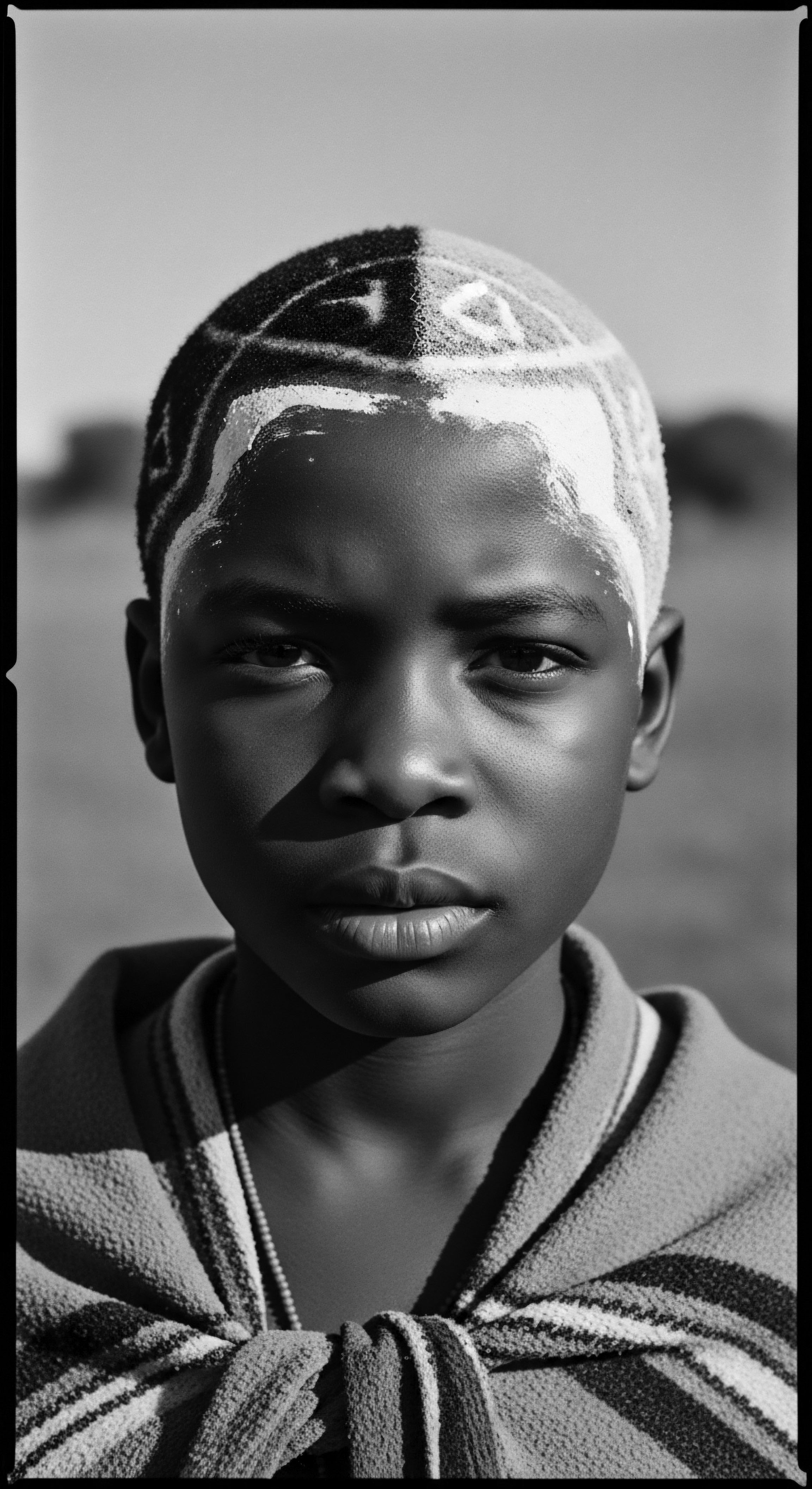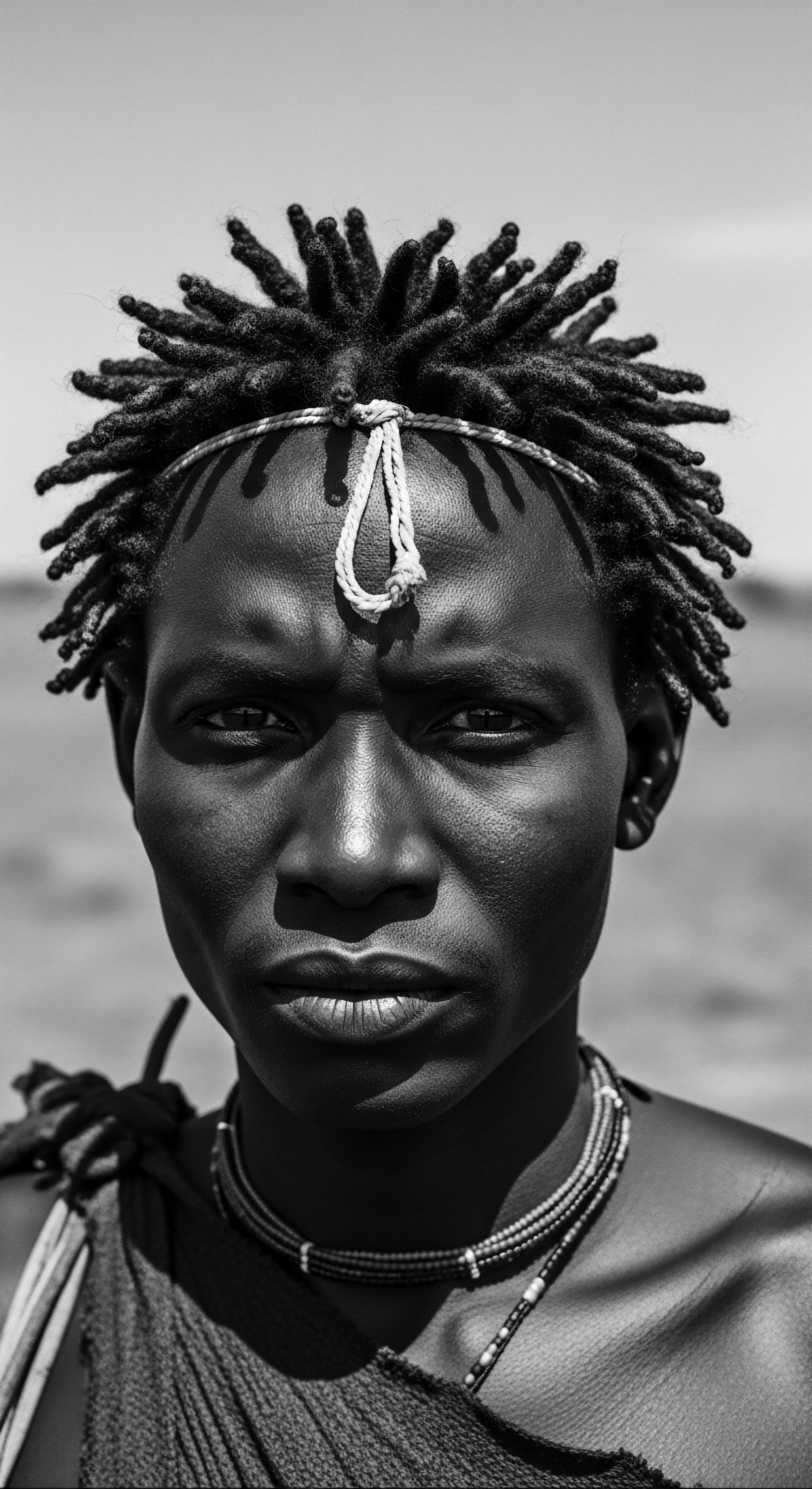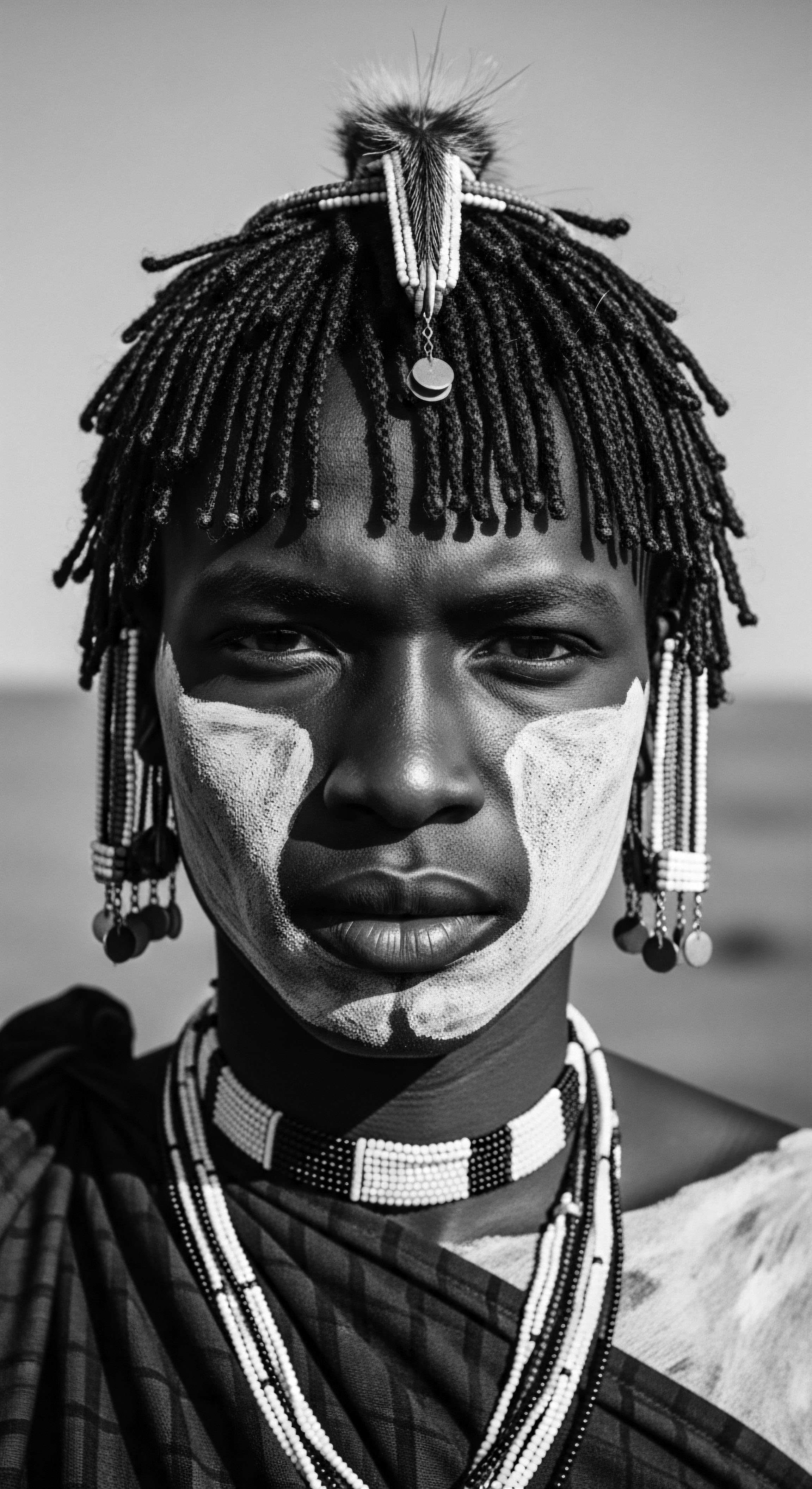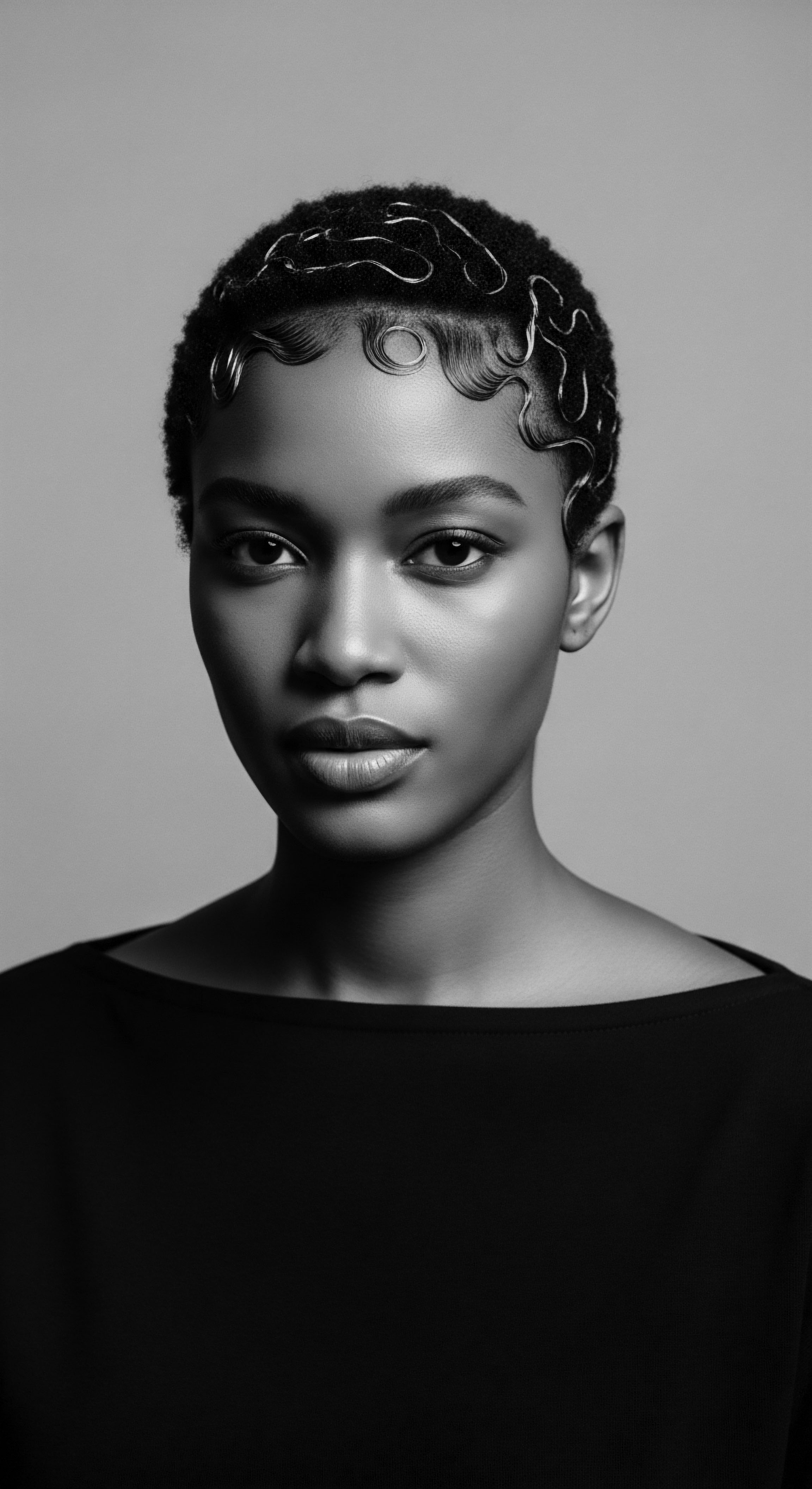
Roots
To truly know the hair, the stories held within each coil and strand, we must journey back to the earth itself, to the very plants that offered their hues for adornment. For those with textured hair, this connection reaches far beyond surface beauty; it speaks to ancestral whispers, to traditions held sacred through generations. We seek to understand how the generosity of the botanical world shaped expressions of self, status, and spirit across diverse Black and mixed-race communities, linking elemental biology to deep heritage. The history of hair color, spanning millennia, has taken various forms, shapes, and colors, a testament to the enduring human desire for alteration.

What is the Chemistry of Natural Pigments in Textured Hair?
At its base, hair is keratin, a protein. The way light interacts with the helices and bonds of this protein, especially within the unique structure of textured hair, determines its inherent sheen and color. Plant-based dyes, unlike many modern synthetic compounds, work with this existing structure rather than stripping it away. They typically deposit pigments onto the outer layer of the hair shaft, the cuticle, or sometimes partially penetrate it.
This gentle interaction respects the hair’s integrity, a principle long recognized in traditional practices. The molecular compounds within plants, such as lawsone in henna or indigotin in indigo, form bonds with the keratin, creating a lasting stain. This process differs markedly from the aggressive chemical reactions of many contemporary dyes, which often rely on ammonia and peroxide to open the cuticle forcefully and alter natural melanin.
The earth’s palette, offered by plant life, gave ancestral communities ways to adorn their hair, a practice deeply woven into their identity and cultural expressions.
The chemical composition of plant-based dyes means they are often free from harsh chemicals like PPD (p-Phenylenediamine) or ammonia, making them a gentler choice. This makes them appealing for holistic hair wellness, aligning with ancestral wisdom that prioritizes care and preservation. When we consider the specific coiled patterns and varied porosities of textured hair, this gentle approach is particularly significant; aggressive chemicals can cause considerable damage to already delicate structures.
This understanding of plant chemistry validates practices passed down through time, showing how ancient wisdom often held scientific truths long before laboratories confirmed them. These plants, with their natural pigments, could bind to the hair shaft and impart color.

How Did Early Societies Discover Hair Coloring Plants?
From the earliest human settlements, the world around offered an array of colors. Red ochre, sourced from earth, found its place in decorating dwellings, textiles, and bodies, including hair, perhaps as far back as the Paleolithic Period. Beyond minerals, the vast botanical realm provided a living laboratory. Ancient civilizations observed how certain plant materials stained skin, fabric, and, naturally, hair.
The knowledge of these staining properties was accumulated and refined over millennia. For instance, in ancient Egypt, evidence dating back to approximately 3400 BCE suggests the use of henna to color hair red or black. This awareness of plant properties extended across continents, with distinct applications arising from locally available flora. The Virginia Indians, for one, utilized sumac, specific seeds, small roots, and tree bark to stain their hair, alongside coloring their faces and other materials.
These initial applications were not solely about aesthetics. Hair adornment often carried symbolic weight, indicating social status, tribal affiliation, spiritual beliefs, or readiness for life events. The earliest records of henna use, for example, come from Egypt, with mummified bodies showing henna-dyed hair and fingertips, possibly applied as part of mourning rituals or to restore a youthful appearance. This practice highlights the deep connection between hair, personal identity, and the journey of life and death within ancient cultures.
| Plant Dye Henna (Lawsonia inermis) |
| Common Hues Red, reddish-brown, auburn, black (when mixed) |
| Primary Historical Regions of Use Egypt, India, Persia, North Africa, West Africa, Indian subcontinent, |
| Plant Dye Indigo (Indigofera tinctoria) |
| Common Hues Blue, blue-black, deep black (when layered with henna) |
| Primary Historical Regions of Use India, China, Southeast Asia, parts of Africa, |
| Plant Dye Saffron (Crocus sativa) |
| Common Hues Yellow, golden shades |
| Primary Historical Regions of Use Egypt, India, Persia, Mediterranean, |
| Plant Dye Madder (Rubia tinctorum) |
| Common Hues Red, reddish-orange |
| Primary Historical Regions of Use Ancient Egypt, Pakistan, Middle East, Europe, |
| Plant Dye Walnut (Juglans spp.) |
| Common Hues Brown, dark brown, black |
| Primary Historical Regions of Use North America, Europe, Middle East, |
| Plant Dye These plant dyes offered a spectrum of colors, deeply influencing hair adornment practices across diverse ancestral communities. |

Ritual
The application of plant-based dyes was rarely a mere cosmetic act; it was often deeply intertwined with ritual, community, and the passage of life. For textured hair communities, where hair has always served as a visible testament to identity and belonging, these coloring practices held significant social and spiritual weight. The preparation and application became a communal affair, a moment of connection, passing down knowledge from elder to youth, hands working in concert. These practices served as living archives, preserving ancient wisdom about natural ingredients and their interaction with the coils and kinks that define so much of Black and mixed-race hair heritage.

How Were Plant Dyes Applied in Ancient Hair Care Routines?
The methods for preparing and applying plant dyes varied widely across different cultures, yet common elements often united them. The process typically involved harvesting the specific plant parts—leaves, roots, bark, or flowers—drying them, and then grinding them into a fine powder. This powder would then be mixed with water or other natural liquids, sometimes oils or acidic agents like lemon juice, to form a paste. This paste was then carefully applied to the hair, often section by section, ensuring even distribution.
The duration of application, the addition of heat, or subsequent rinses influenced the final color intensity and longevity. In ancient Egypt, for example, henna paste was mixed with oils to create compounds applied to hair, enhancing its hue and perhaps offering conditioning benefits.
The preparation itself might be a ritual, involving specific intentions or prayers. The hands that prepared the mixture, often those of experienced women, carried not just skill but also ancestral knowledge. This communal aspect ensured the traditions persisted, moving through time as a shared language of care.
Consider the practices documented among the Epe communities in Lagos State, Nigeria, where tribal women inherited the knowledge of using local flora for cosmetic applications through oral traditions and practical demonstrations across generations. This points to a larger pattern of shared experience and learning that underpinned these ancient hair care systems.

What Social and Spiritual Significance Did Hair Dyes Hold?
Beyond visual transformation, plant-based dyes held profound social and spiritual meaning. Hair, especially textured hair, served as a powerful medium for non-verbal communication within African and diasporic societies. Its style, condition, and color could convey marital status, age, social rank, tribal identity, or even spiritual devotion.
Changing hair color with plants often marked significant life events, such as rites of passage, ceremonies, or mourning periods. The symbolic meanings attached to hair color in Egyptian society, where darker shades represented nobility and lighter shades were linked to youth, further illustrate this point.
Henna, particularly, carried deep religious significance in many cultures, believed to bring blessings and protection. In West Africa, for instance, the dyeing of hair with substances like indigo could signify status or tribal affiliation, contributing to the visual language of the community. As explorer Jean Barbot noted, when observing West Africans, he was impressed by their “extraordinary African hairstyles,” including those daubed with palm oil and red earth, a testament to the diverse and vibrant practices of hair adornment that predated European contact (Byrd & Tharps, 2001, p. 1).
This reference speaks to a wider historical truth ❉ for countless generations, hair in African societies acted as a symbol of personal identity, communal cohesion, and spiritual connection. The choice of color, then, was not arbitrary but a deliberate expression of one’s place within the world. Even after forced migration during the transatlantic slave trade, the deep-seated cultural significance of hair persisted, with some enslaved individuals using available natural resources like coffee as a dye for their hair, demonstrating remarkable resilience in maintaining forms of personal expression (Byrd & Tharps, 2001, p. 1). This enduring connection to adornment, even under immense duress, underscores the powerful role plant-based dyes played in preserving a sense of self and heritage.
The collective wisdom of ancient communities ensured that plant-based dyes were applied with reverence, serving as a conduit for cultural expression and identity.
The knowledge of these practices was often guarded within family lines or specific community roles, making the act of preparing and applying dyes a sacred trust. This continuity, despite external pressures and the displacement of peoples, speaks to the resilience of cultural memory and the enduring human need for self-expression through physical adornment.
- Henna Rituals ❉ Preparation involved drying and crushing Lawsonia inermis leaves, mixing with water or acidic liquids, then applying the paste to hair for red, auburn, or brown tones. It was often used for celebratory and spiritual ceremonies.
- Indigo Layering ❉ Applied typically after henna to achieve deeper browns or true black, indigo powder (from Indigofera tinctoria) was often mixed with water to form a paste. Its rich blue-black hue was valued for its natural and conditioning properties.
- Nut and Bark Preparations ❉ Various Indigenous American tribes used crushed walnut hulls, alder bark, or sumac to create dyes ranging from brown to reddish-black. These applications often involved long soaking or boiling processes to extract pigments.

Relay
The journey of plant-based dyes, from ancient earth to contemporary practice, highlights a living legacy, a relay of wisdom passed through time. This relay carries not only the knowledge of ingredients but also the ancestral philosophies of holistic well-being and the deep sociocultural meaning imbued in hair. Examining this trajectory allows us to connect the threads of ancient ingenuity with modern understanding, particularly concerning the unique qualities of textured hair.

How Do Plant Dyes Interact with Different Textured Hair Types?
The morphology of textured hair, characterized by its varied curl patterns, cuticle scales, and ellipticity, presents a distinct canvas for plant-based dyes. While synthetic dyes often force their way into the hair shaft by lifting the cuticle, plant dyes primarily coat the outer layer. This ‘coating’ effect can be particularly beneficial for textured hair, which tends to be more fragile and prone to dryness due to its structural characteristics. Instead of damaging the cuticle, plant dyes can smooth it down, potentially adding to the hair’s luster and strength.
Henna, for example, is noted not only for its coloring ability but also for its conditioning properties, leaving hair with added shine and a healthy feel. This aligns with the ancestral understanding that hair adornment was not separate from hair health.
The specific way plant pigments bind to keratin can vary depending on the hair’s porosity, which is often higher in certain textured hair types. This means that while plant dyes generally offer gentler coloring, results can differ, with some coils taking on color more readily than others. Consistent application, a practice common in historical routines, would build color over time, allowing for a gradual, natural appearance. Studies in ethnobotany continue to uncover the diverse range of plants used across various communities globally for hair and skin care, some directly offering color, others serving to maintain scalp health and hair vitality, all contributing to a holistic approach.

What Historical Data Supports Plant Dye Use in Textured Hair Communities?
Archaeological findings and historical accounts consistently point to the widespread and culturally significant use of plant dyes in communities with a strong heritage of textured hair. For example, in ancient Egypt, the practice of coloring hair with henna is well-documented, found on mummified bodies and referenced in historical texts. Given the diverse hair textures present in ancient Egypt, this points to the adaptability of henna for various hair types.
The earliest records of henna use date back to the predynastic period, around 3400 BCE, illustrating its deep roots in hair adornment. Beyond Egypt, evidence of plant dye use extends across the African continent and into the diaspora.
The enduring practice of using plant dyes in textured hair communities is a testament to cultural resilience and a living connection to ancestral ways of life.
In West Africa, where vibrant hair traditions flourished, indigenous plants were used for coloring and conditioning. For instance, the leaves of Diospyros ebanum were traditionally applied to hair in certain Nigerian communities for dyeing. The transfer of these practices, even under extreme duress, is a compelling testament to their importance. During the transatlantic slave trade, despite the brutal disruption of their cultural practices, enslaved Africans found ways to continue certain hair care rituals using available resources.
Coffee, for example, became a natural dye for women in some contexts, and men used substances like axle grease for a combination of dye and straightening, demonstrating resourcefulness and a determination to maintain aspects of personal adornment (Byrd & Tharps, 2001, p. 1). This historical continuity underscores the deep-seated value placed on hair adornment and its connection to identity, even in the face of profound adversity. The resilience of these practices speaks volumes about their significance within the collective memory and heritage of Black and mixed-race individuals.
The widespread use of indigo in India, with records dating back to 1500 BCE in ancient Vedic texts, illustrates its long history as a hair dye that also promoted growth and prevented premature graying. While its primary use was for textiles, the discovery of its hair coloring properties expanded its application. The spread of indigo use to other parts of Asia, and eventually its popularity in parts of Africa, further solidifies its historical relevance in diverse hair traditions.
| Plant Source Henna (Lawsonia inermis) |
| Hair Benefit Beyond Color Conditions, adds shine, strengthens hair strands, can cleanse scalp. |
| Plant Source Indigo (Indigofera tinctoria) |
| Hair Benefit Beyond Color Softens, enhances hair texture, adds volume, soothes sensitive scalps, reduces dandruff. |
| Plant Source Amla (Emblica officinalis) |
| Hair Benefit Beyond Color Strengthens roots, helps maintain hair color, natural conditioner, adds shine, rich in Vitamin C. |
| Plant Source Yucca Root |
| Hair Benefit Beyond Color Natural cleansing agent, nourishes hair. |
| Plant Source Shea Butter (Vitellaria paradoxa) |
| Hair Benefit Beyond Color Moisturizes, protects hair from environmental conditions, used in some African traditions for hair health. |
| Plant Source Ancestral practices understood that natural dyes offered more than just color; they contributed to overall hair health and vitality. |

What Contemporary Understanding Can We Draw from Ancestral Practices?
Modern cosmetic science, in many ways, is now validating the efficacy of ancient plant-based hair care. Research into the phytochemicals responsible for color in plants like quinones, tannins, and flavonoids confirms their ability to interact with hair keratin. The growing demand for natural and chemical-free beauty options has led to a renewed appreciation for these historical methods. Consumers are increasingly seeking alternatives to synthetic dyes, recognizing the potential for irritation and damage associated with conventional chemical compounds.
The wisdom embedded in ancestral rituals, focusing on ingredients that not only color but also condition and protect, offers a blueprint for contemporary hair care, especially for textured hair. The concept of holistic wellness, where hair health is intertwined with overall bodily balance, is a central tenet of many traditional systems, such as Indian Ayurveda. This approach, emphasizing gentle care and natural nourishment, stands in contrast to the often harsh, quick-fix solutions of modern industry. By revisiting historical practices, we gain not just aesthetic inspiration, but also a deeper scientific appreciation for the synergy between nature and healthy hair.
The continuity of these practices, from ancient dyeing techniques to their contemporary resurgence, speaks to the enduring power of ancestral knowledge. It is a dialogue across centuries, where the ancient world continues to speak to our present, offering guidance for a more balanced and respectful relationship with our hair and our selves. The lessons from these historical roles of plant-based dyes encourage a thoughtful engagement with our hair’s identity, acknowledging its heritage as a source of strength and beauty.
- Direct Dyeing ❉ Many plant dyes, such as henna and indigo, work by direct application, where the pigments coat the hair’s outer layer and form bonds with keratin, resulting in color without chemical alteration of the hair’s internal structure.
- Mordant Use ❉ Some historical dyeing processes, particularly for textiles but with relevance to hair, employed mordants—substances like alum or iron salts—to help the plant pigments adhere better to fibers and achieve more stable, vibrant colors.
- Layering Techniques ❉ To achieve specific shades, particularly darker ones, ancient practitioners often layered different plant dyes. For example, indigo was frequently applied after henna to achieve a range from brown to jet black.

Reflection
The quiet wisdom of the soil, offering its vibrant bounty for adornment, resonates through time. Plant-based dyes, in their historical role, were never merely about changing a hue. They embodied a deeper conversation between human beings and the living world, a dialogue particularly profound for communities whose hair carried stories, lineage, and spirit. For textured hair, often viewed through lenses that sought to diminish its natural form, these earthy colors provided a means of self-assertion, a declaration of identity rooted in ancestral ways.
The legacy of these practices is not confined to history books; it lives in every conscious choice to nurture our coils with respect, to acknowledge the vibrant palette our forebears knew, and to honor the sacred adornment passed down through generations. This is the enduring soul of a strand, a testament to resilience, creativity, and the deep, abiding connection to our origins.

References
- Byrd, A. & Tharps, L. (2001). Hair Story ❉ Untangling the Roots of Black Hair in America. St. Martin’s Press.
- Sagay, E. (1983). African Hairstyles ❉ Styles of Yesterday and Today. Heinemann.
- Hernandez, C. & Rosado, A. (2022). Recent Advancements in Natural Plant Colorants Used for Hair Dye Applications ❉ A Review. Cosmetics, 9(6), 116.
- Polesna, L. Polesny, Z. Lachmanova, I. & Kucera, M. (2012). Ethnobotanical Study of Dye-Yielding Plants Used in Communities of Shipibo-Konibo Amerindians Around Pucallpa City, Peru. Ethnobotany Research & Applications, 10, 123-132.
- Ahmed, S. I. & El-Hadidy, S. (2019). Natural Dyes in Historical Egyptian Textiles. Textile Science & Fashion Design, 1(2).
- Ilboudo, S. & M’batchi, B. (2014). Ethnobotany of Dye Plants in Burkina Faso ❉ Traditional Knowledge and Sustainable Uses. International Journal of Biodiversity and Conservation, 6(11), 785-794.
- Gebremariam, K. A. & Alemayehu, G. (2025). Plants Used for Hair and Skin Health Care by Local Communities of Afar, Northeastern Ethiopia. Ethnobotany Research and Applications, 30.
- Singh, S. K. & Sharma, M. (2017). Hair Coloring ❉ A Review on Natural and Synthetic Dyes. International Journal of Pharmaceutical Sciences Review and Research, 42(1), 1-9.
- Manniche, L. (1999). An Ancient Egyptian Herbal. British Museum Press.
- Lucas, A. & Harris, J. R. (1962). Ancient Egyptian Materials and Industries. Edward Arnold.
